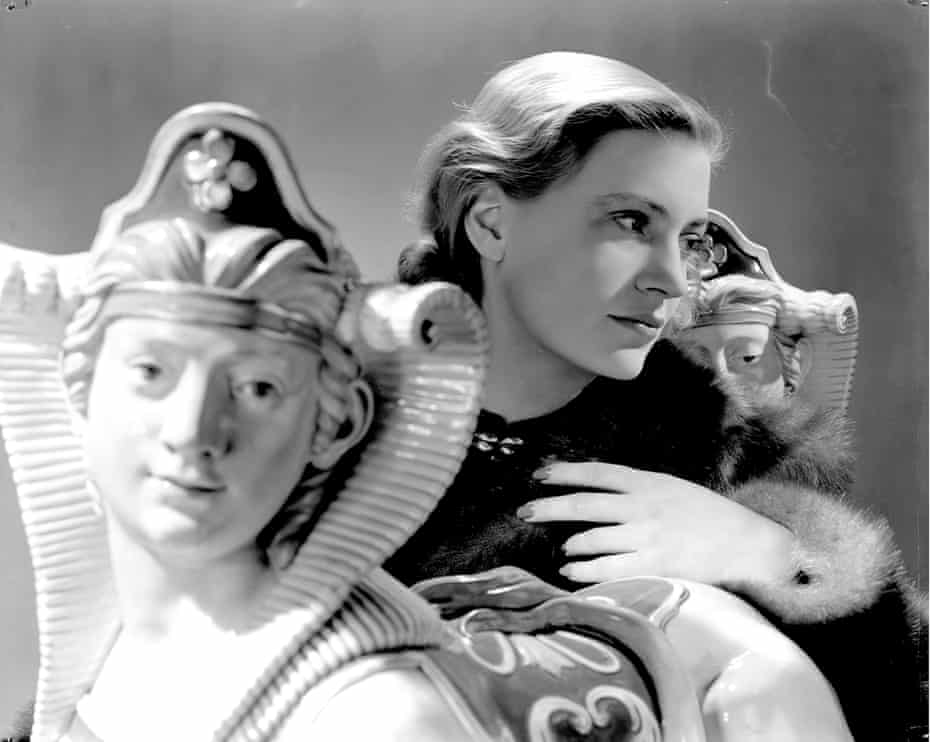
Lee Miller, Self Portrait with Sphinxes, Vogue Studio, London, England, 1940. Photograph: © Lee Miller Archives
Vogue’s war correspondent poses in a statuesque self-portrait as 1940s London finds itself under threat
Tim Adams
@TimAdamsWrites
Sun 28 Mar 2021
In 1939, the American photographer Lee Miller came to live in London, with the artist Roland Penrose, her lover. She wrote to a friend back home to describe how, with the outbreak of war, she had found a new job. “I’d barely settled in to Hampstead when Condé Nast (British Vogue magazine) collared me and I found myself running their studio,” she wrote. “They had little choice, poor things, all their photographers had been called up, the Americans just wanted to go home… I made out all right.”
The letter embellished the truth: in fact, Miller had pitched up at Vogue’s offices to volunteer her services, and, though initially rebuffed, had refused to go away. It was to prove an inspired relationship. To begin with, the magazine saw its wartime role as business as usual: “Our policy is to maintain the standards of civilisation. We believe that woman’s place is Vogue’s place. And woman’s first duty is to preserve the arts of peace by practising them, so that in happier times they will not have fallen into disuse…” With Miller’s input, however, the news seeped into the pages of the magazine: alongside her fashion spreads, she started to make photographic series of women who were contributing to the war effort; by 1944 she persuaded Vogue to make her its first war correspondent and she famously photographed the liberation of France and the opening of Dachau for the magazine.
This picture, a self-portrait (part of a new book and exhibition of Miller’s Vogue photography), was taken in 1940 in the magazine’s studios, at the beginning of the blitz. Miller’s profile, between the carved sphinxes, captured a spirit of coutured defiance. In the months that followed, after Vogue’s offices were bombed, her pictures more often juxtaposed that model composure with ruined buildings and broken statues, but it was never dimmed. “During three months of solid hell at night,” Miller wrote to her parents the following year, “it became a matter of pride that the work went on.”
Lee Miller: Fashion in Wartime Britain is published by the Lee Miller Archives (£35).
An exhibition of the same name is at Farleys House & Gallery in East Sussex, 20 May-8 August
No comments:
Post a Comment